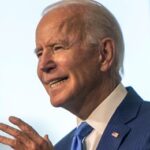The bureaucracy’s response is always far worse and out of line than the problem.
School shooters represent a minuscule fraction of the risk to America’s schoolchildren. According to a 2018 Washington Post editorial, “the statistical likelihood of any given public school student being killed by a gun, in school, on any given day since 1999 was roughly 1 in 614,000,000.” According to a recent article in The Atlantic: “The Washington Post has identified fewer than 150 people (children and adults) who have been shot to death in America’s schools since the 1999 shooting at Columbine High School, in Colorado. Not 150 people a year, but 150 in nearly two decades.”
Nonetheless, 96% of America’s schools conduct lockdown drills meant to protect students from active shooters. These are required by state or local law in most cases.
The inordinate attention paid to a phenomenon that represents such a tiny proportion of the danger to school kids (a drop in the bucket compared to the danger they face from car accidents for example) can only be justified if one assumes that the psychological impact of these shootings on students is disproportionately great. But what if these lockdown drills are actually what is creating most of the anxiety?



